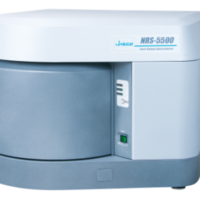Introduction
Microplastics are considered our environmental concern because they can be present in different bodies of water. They can be found in seawater, freshwater, and even in bottled water. The most common materials that they’re found are Polypropylene and polyethylene. Polyethylene is used to make plastic bags and polypropylene can be found in food packaging material.
Experimental
Raman microscope can measure the small samples that have a size of around one micrometer. These samples can be placed in the microscope using a glass slide.
The plastics for this measurement are microplastics that were collected in the South Florida area. These samples were washed to avoid any influence or in the measurement.
The laser that we use is 785. This can produce less fluorescence. Actually, we also use less power so this decreases the chance of damaging the sample.
Results
Once the measurement is completed, we can see that the peaks come out very nicely in a very short time of collection. Next, the spectrum then is sent to a search algorithm that is going to identify what is the possible material, and then we can see that. The sample that we identify was polypropylene.






